The capital Windhoek (translated as “windy corner”) is the political, cultural, industrial and economic center of Namibia with 400,000 inhabitants. Windhoek was founded on October 18, 1890, when the foundation stone for what is now known as the “Alte Feste” fortress was laid. Other popular sites include the Tintenpalast, the Christuskirche, the Kaisergymnasium and the Heinitz und Sanderburg. The quiet and well-organized city with a colonial German touch, offers German restaurants and shops, a widespread use of the German language, the celebration of German customs (such as Carnival or Oktoberfest) - the German tradition is reflected everywhere. Even the beer is still brewed according to the German "Reinheitsgebot" (special purity law). Mixed with African traditions and roots, Windhoek offers a unique atmosphere and a relaxed lifestyle that makes the city so endearing.

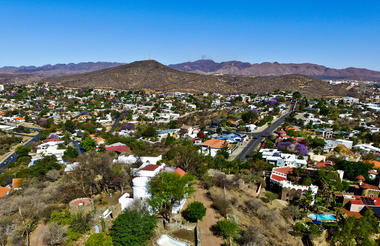
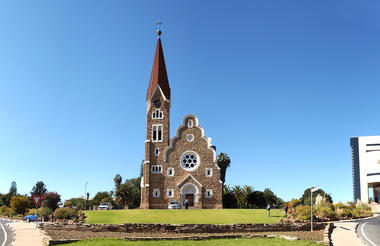
Known for its rust-red sand, grassy plains, and terracotta-painted landscapes, the Kalahari Desert situated on Namibia's east border is a place that holds the heart of the African continent in its hands. Scattered herds of antelope, zebra and the aloof leopard exist among the Camelthorn Trees of this barren homeland. The Kalahari is a destination that provides an insight into wildlife and culture unmatched anywhere else on Earth. From the pink and red seamlessly cloudy waves in the mornings to the draw dropping golden sunsets in the evening, the true lure lies in the Kalahari's solitude and eerie silence.
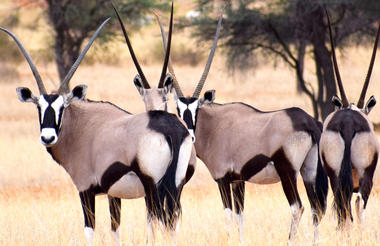
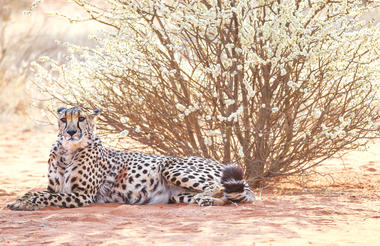

Southern Namibia is home to the second-largest canyon globally and is one of Namibia's most remarkable geological wonders - Fish River Canyon. Plunging ravines and looming rock faces dominate the landscape, with natural hot springs dotted throughout the area. Dramatic sunrises cast heavy shadows while light plays on the rocks; various breath-taking views unfold one after another throughout the day. Yet, gazing at the starry night sky after dark is undoubtedly one of the most sought-after experiences. With the ever-changing crevasses and the raw magnitude of nature’s creation, this canyon is not to be forgotten.



Situated in the heart of Namibia's southern interior, the small town of Aus is an ideal scenic and tranquil base to explore the country. Located east of Keetmanshoop and north of the Orange River, a 2-night stay here will grant enough time to explore the towns of Lüderitz and Kolmanskop. The landscape is characterized by granite mountains, dry riverbeds and arid plains; however, the winter rains make this harsh terrain come to life. The ample hiking and climbing opportunities, along with the famous wild horses that roam free throughout the area, are what really make this town stand out among the rest.

If you only have time to see one thing in Namibia, make it the soaring sand dunes of Sossusvlei. Few words can describe the towering red dunes spread across the landscape or walking amongst the fossilized Acacia trees in the vast white clay pan of Deadvlei. The ever-changing dunes are the arid lands most iconic feature, and hiking to the tops will allow you to view the Martian-like landscape below. Sossusvlei shows off its beauty by housing many plants and animals that have adapted to life in the dry, yet dreamy terrain. This natural wonder is a perfect example of Namibia's unspoiled desert landscape.

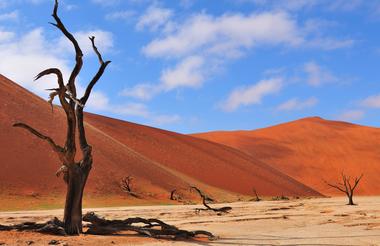
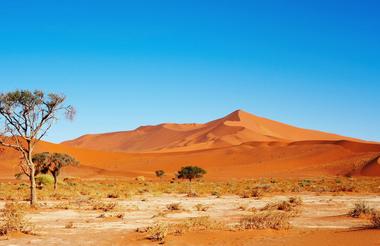
Nestled on the west coast of the Namib Desert - where the dunes meet the ocean - is the popular little town of Swakopmund. This laid-back area offers charm in bucket loads with its colonial architecture, quaint restaurants and historic landmarks - such as the "Mole" sunset pier. The cobbled streets and picturesque buildings indicate the rich heritage and culture this town holds, while the museums show its diverse history. This area radiates personality - from the more relaxed daytime charm to the vibrant atmosphere of the night - this is one of Namibia's hidden gems that need to be experienced.
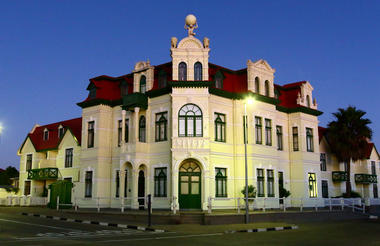
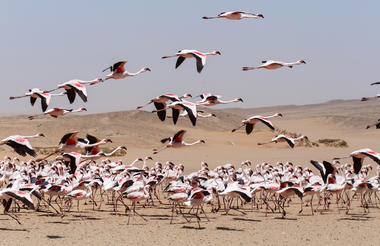

Twyfelfontein is a site of ancient rock engravings in the semi-arid region of north-western Namibia. This world heritage site is situated 100 kilometres from the ocean, where the scenery shifts from dry red sands to lush grassland. Drawn by the San People, the engravings show depictions of both human and animal tracks. Many of the impressions also depict animals that are no longer found in the area - including lion, zebra, kudu and even seals! Visiting these paintings, with their rich historical and cultural backgrounds, allows you to learn about the Namibian heritage and the San people's customs and beliefs.
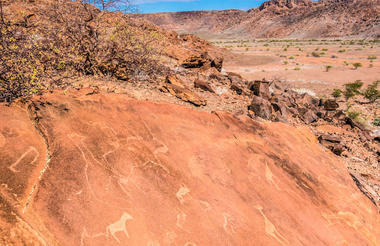
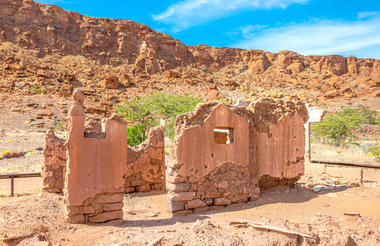
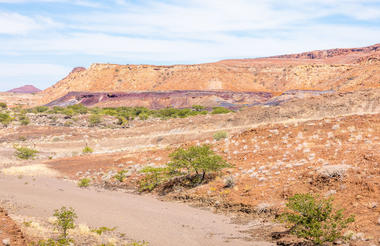
Featuring breath-taking panoramas, unforgettable sunsets, and abundant wildlife, Etosha National Park is Namibia's premier wilderness conservation area. The Etosha Pan - a shallow salt pan covering an area of 5.000 Square kilometres lies in the heart of the park. Natural springs are found in this dry terrain, making for excellent game viewing. Throughout the Park, the landscape is generally flat, with various habitats ranging from mopane woodland to wide, open, virtually treeless plains. Etosha is home to one of the world's most stable black rhino populations, along with lion, elephant, leopard, cheetah, and hyena.
Etosha's southernmost section is known for its rich population of both white and black rhino. Etosha South is home to the Okaukuejo Rest Camp, which is famous for its floodlit waterhole. The many viewpoints overlook picturesque bush-scapes and abundant wildlife. Getting into the South is accessible by Andersson's Gate. Here, visitors can expect to see many animals, including lion and the rare, black-faced impala. However, the most notable of animals found here are elephants. Enjoy guided nature walks, game drives, or simply watching the sunset from this breath-taking location.

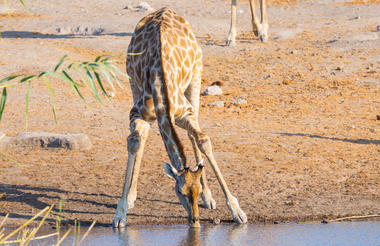
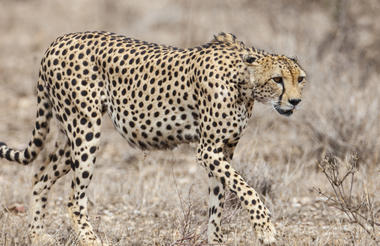
Situated on the eastern side of Etosha, bordering Fisher's Pan, Onguma Game Reserve is one of In the eastern parts of the Etosha National Park, bordering Fishers Pan lies the Onguma Private Game Reserve. Protecting more than 34,000 acres of land, this private reserve is home to over thirty species of animals, from kudu, giraffe and oryx, to predators such as lion, cheetah and leopard. The Onguma water hole is also a great place to spot game. Game drives, guided walks, and rhino research drives can be enjoyed within the reserved area, and safaris into Etosha National Park are available to see the abundance of animals. Here you will have the opportunity of experiencing Africa in all her beauty and diversity.



As it is now known, the big fountain, or Grootfontein, is a modest town located in the northern parts of Namibia. It is a smaller but significant upcoming tourist stop that is well worth a visit. This region is well-known for its Bushmen culture. Visitors come from all over to learn about these people. Grootfontein is noted for being home to the world's largest meteorite - The Hoba Meteorite - along with its many Jacaranda and massive Baobab Trees. This underrated town holds so much of the country's culture, and when visiting Namibia, should not be left off of the itinerary.

As previously described




